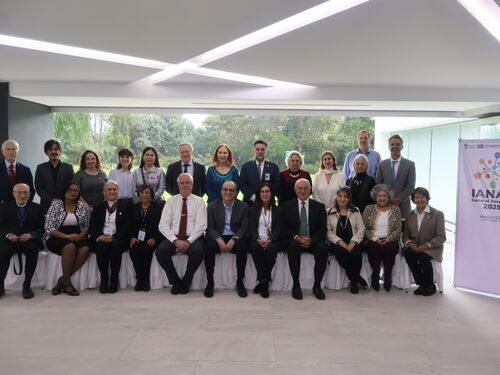COVID-19 and Disabilities: Inclusive Disaster Planning Is Crucial for Vulnerable Populations
Feature Story
Last update July, 1 2020
The COVID-19 pandemic has upended the lives and routines of people with disabilities in countless ways, said panelists during a recent National Academies webinar.
For example, facemasks make it difficult for people who are deaf or hard of hearing to read lips. Taking public transportation can be risky for people who are blind or visually impaired, who often rely on high-touch (and virus-prone) surfaces like handrails to navigate. Furthermore, some caregivers have quit jobs for safety reasons — but for their clients with disabilities, the loss of a caregiver means the loss of independence.
Panelists also emphasized that disabled Black people and other minorities, who are disproportionately impacted by poverty and racism, are at greater risk of COVID-19 infections than people without disabilities.
Part of the issue, they explained, is that people with disabilities are often left out of disaster planning discussions.
‘Nothing About Us Without Us’ — Disability-Inclusive Communication During Disasters
State health commissions should examine how they are working with independent living centers, disability advocacy organizations, and people with disabilities themselves at all stages of disaster planning, including for COVID-19, said Marcie Roth, executive director and CEO of the World Institute on Disability.
“When you’re planning for your communications — your alerts and warnings for evacuations — people with disabilities must get the same information as able-bodied people,” she said.
Are people with hearing, visual, and intellectual and developmental disabilities being kept up to date as the pandemic moves into its next stages? Is the information they receive accessible? Are there interpreters, visual materials, and large print and braille options? These are just a few considerations, said Roth.
“Planning with us and not for us is a really important lesson to be learned,” Roth emphasized. “States get a significant amount of federal funding for disaster preparedness and recovery, and those federal funds should be making their way to disability-inclusive planning. If not, we have missed the opportunity to be ready for whatever the next emergency or disaster may be.”
Reimagining the Hospital Experience
Hospital “no-visitor” policies are another point of contention, said Roger Severino, director of the Office for Civil Rights (OCR) at the U.S. Department of Health and Human Services.
“Too many people have been dying alone — literally — during the COVID-19 pandemic,” said Severino. “These strict no-visitor policies were likely developed with good intentions to prevent transmission of the virus. But if you have strict policies, you might endanger the health of people with disabilities.”
Recently, several disability groups filed complaints with OCR regarding the state of Connecticut’s strict no-visitor policy at hospitals, saying it deprived some patients of their right to receive informed consent. A new policy change allows for a family member or care provider to accompany a patient who has a developmental, intellectual, or physical impairment and requires special assistance. Severino hopes Connecticut’s order could serve as a model for other states.
As states have grappled with how to allocate ventilators in a crisis, the OCR has also been working to ensure hospitals don’t discriminate on the basis of disability or single out particular conditions.
“In issues of scarcity, we shouldn’t be making value judgments on whose life is worthy based on the absence or presence of disabilities,” said Severino.
Michael McKee, associate professor at the University of Michigan Medical School, asks his patients to consider what the best hospital experience would look like, should they need to go. For deaf and hard-of-hearing patients in particular, he encourages them to create a “communications access plan” — similar to a birth plan — that details their preferences for care.
“Any time there’s a transition — from the ICU to a floor, or from department to department — it’s important to share that communications plan with the staff taking care of that patient,” said McKee.
Preparing for the Next Pandemic
Although the world is still in the first wave of COVID-19, “we need to be thinking about what we can be doing better next time, and our obligations to people with disabilities,” said Gloria Ramsey, associate dean for diversity, equity, and inclusion at the Johns Hopkins School of Nursing.
One step toward better preparedness would be anti-bias training that covers race, disability, and how they intersect, Ramsey said. There’s also a need for design innovations, like transparent face masks that make it easier to read lips and facial expressions, and widespread Internet access, so people can have uninterrupted access to telehealth services and peer support groups.
Severino added that “this is a test of our national character in how we treat people with disabilities. We do not believe in leaving anybody behind.”
Further Reading
Webinar recording



